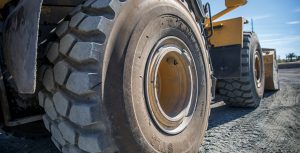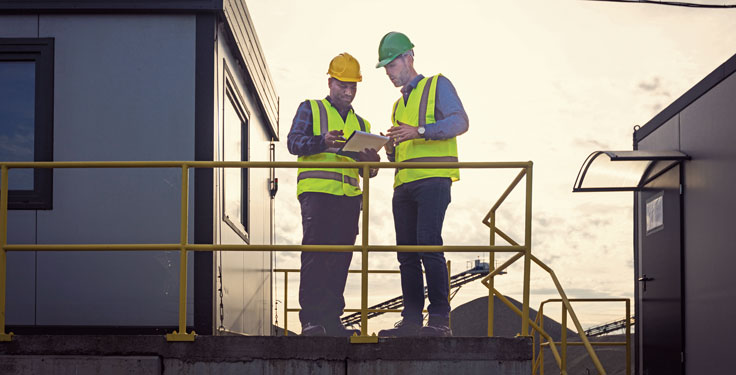Tread selection 101

This radial off-the-road tire features an E-3/L-3 non-directional tread pattern for ideal traction, a smoother ride and longer tire life in earthmover or loader applications. Photo courtesy of Titan International.
There is an array of markings and ratings for construction and mining tires. Tire owners should know what those letters and numbers mean, as tire styles and their intended uses can differ greatly.
One of the most important factors in tire selection is tread choice, and that all starts with understanding the tire codes. Not matching the appropriate tread pattern to the application and ground condition could compromise machine stability and operation. Tire overheating, puncturing or tread separation could all occur as the result of an ill-chosen tread pattern. That’s why owners should know the markings that correspond to tread depth on their tires and what those mean.
The Tire and Rim Association made letter and number designations for treads that apply to all tire manufacturers:
- E (earthmover) – Those designed for haulage and transport of materials on unimproved surfaces at up to 40 mph and up to 2.5 miles at a time.
- G (grader) – Those designed for grading material over unimproved surfaces at speeds up to 25 mph and for unlimited distances.
- L (loader) – Those designed for use on loaders and dozers that do not exceed 5 mph and distances of 250 ft. each way.
A number that denotes tread depth and style follows each of these letters. For instance, E-3 would indicate an earthmover tire with a rock tread pattern at standard tread depth.
1. Rib tread with standard depth for earthmoving (E) applications, primarily on roads.
2. Traction tread with one-to-one lug-to-void ratio and a standard tread depth for E, G and L applications that require traction on soft surfaces.
3. Rock tread with two-to-one lug-to-void ratio and a standard tread depth for E, G and L applications in average hard-surface conditions.
4. Rock tread with a two-to-one lug-to-void ratio and tread that is 1.5 times deeper than standard for E, G and L applications in harsh, rocky conditions.
4S. Smooth tread pattern with no lugs and a tread that is 1.5 times deeper than standard for L applications on hard surfaces where traction isn’t a concern.
5. Rock tread with a two-to-one lug-to-void ratio and tread that is 2.5 times deeper than standard for L applications in the most severe working conditions.
5S. Smooth tread pattern with no lugs and a tread that is 2.5 times deeper than standard for L applications in severe working conditions that require wear resistance over traction.
6. Rib pattern with a shallow tread that is 60 percent as deep as standard for E settings where flotation and minimal ground disturbance is required.
Tread compound
Unlike tread style markings, there is no industry standard for compounds because each tire manufacturer develops proprietary compounds. However, the choices for radial tires often fall into one of these categories:
- Cut-resistant (C) – Formulated for protection from chipping and tearing in rocky applications.
- Wear-resistant (W) – Formulated for extending tread wear in load-and-carry applications with frequent stopping and starting.
- Heat-resistant (H) – Formulated for haulage applications with heavy loads, long distances and high speeds.
Combination for the application
With more application-specific tire options available, fleet managers must understand how to get the most of their investment. Making informed decisions will ultimately lead to increased tire productivity and longevity, but only if you understand the tire codes.
Johni Francis is global OTR product manager at Titan International.









